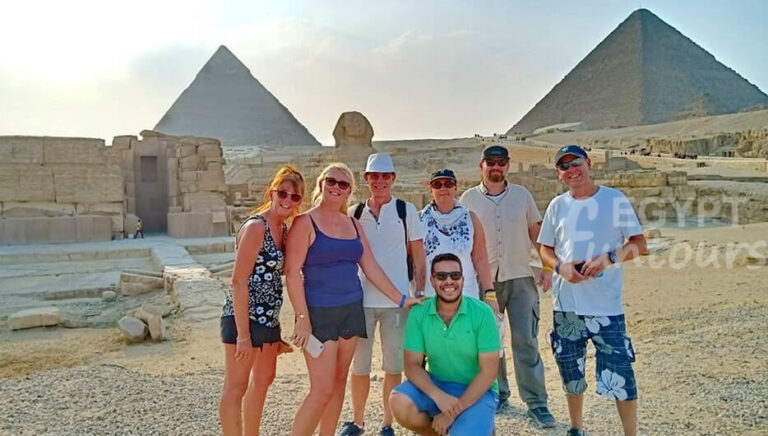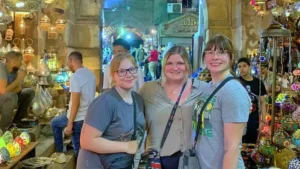The Hyksos and the Invasion of Ancient Egypt
From the 13th Dynasty onward, Egypt underwent a period of societal instability and disintegration known as the Pharaonic Period. A large number of Asian immigrants “Hyksos” took advantage of the circumstances to gradually infiltrate the land of the Nile, where they were able to advance to military posts or work in the crafts and commerce industries.
The Hyksos were a Semitic people. They invaded Egypt between 1700 and 1900 BC. The nation was in a period of internal turmoil. This allowed the Hyksos to seize control. They established a dynasty that reigned for two centuries and laid the groundwork for a violent conquest. They are known as the first foreign rulers of Egypt.
A group of Asian people

Many theories exist to explain how and why the Hyksos came to be. The most accepted one points to their Eastern origins. They were diverse groups from Palestine and the eastern areas along the Nile. It’s likely that they had a Semitic component. Evidence suggests they had been in contact with Egypt for centuries before their arrival.
Hyksos launched their invasion of Ancient Egypt
The exact date and circumstances of this event are difficult to pinpoint, but the fact is that the political inability of the pharaohs of the thirteenth dynasty to maintain a unified Egypt at one point led the Hyksos, who had already been gradually settling in different cities throughout the country and were gaining power in important enclaves such as Memphis, to seize control of the country. The Hyksos became dominant in these towns around 1675–1650 B.C. This time period marks the fall of the Egyptian 13th Dynasty.
Beneficial Foreign Rulers
The Hyksos rulers were not harsh or vicious. Later historical accounts gave them a bad reputation. In reality, they adapted well to Egyptian life. They kept Egypt’s administrative system. They also kept many Egyptian employees.
The Hyksos respected Egyptian culture. They honored the Egyptian writing system and artistic styles. They adopted Egyptian clothes and customs. Most importantly, they kept the rituals of the pharaonic monarchy. These rituals were linked to the god Ra.
However, the Hyksos also brought their own culture with them and introduced new musical instruments and jewelry. They also brought new ceramic sculptures and made advancements in bronze metallurgy.
They also brought new weapons to Egypt. This included the curved sword and the composite bow. Aside from these things, their rule was not very different from the Egyptians’. They simply had a more open foreign policy. Later historians exaggerated their cruelty to praise the pharaohs of the New Empire.
The Hyksos Period comes to an end with King Ahmose.
Ahmose I (Ahmose the Great) (1550–1525 B.C.). He was the first king of the XVIIIth Dynasty and the first ruler of the Kingdom of Egypt. Son of Seqenenre Tao II and younger brother of Kamose, who ascended to the throne in his father’s place.
These two were killed during a battle with the Hyksos. He came to the throne at a relatively early age, and he was the youngest monarch in history. His mother, Ahhotep I, was the throne’s guardian for a few years. In the eleventh year of his reign, Alexander began a campaign against the Hyksos, which resulted in the conquest of Varis, the Hyksos capital.
It was Ahmose who brought the Hyksos’ dominance to an end when he pursued his opponents into Palestine and destroyed their fort at Sharuhen. Following the collapse of the fort, he made the decision to solidify Egypt’s boundaries by reconquering Nubia and closing the Syrian border with Sudan. The Cushitic peoples, who were formerly friends of the Hyksos, were the target of many military campaigns conducted by him.
He was able to maintain control until the second waterfall came into play. In the aftermath of this, Egypt had a period of peace and prosperity.
King Ahmose The Great
During his reign, Ahmose I began building temples and rebuilding projects in Thebes and Memphis. He reopened the limestone quarries at Tura after a long period of closure. In Abydos, he ordered the construction of two brick cenotaphs, one for his grandmother, Tetisheri, and one for himself.
He restructured the country’s government. He also restored power to the governors in their provinces. Egypt’s openness to the Near East allowed them to continue importing raw materials and creating new art. Archaeologists discovered his mummy at Deir el-Bahari. They believe he was around 35 years old at the time of his death. It has not been possible to find his tomb.
The Capital City During the Reign of the Hyksos
Archaeologists have discovered that the city of Avaris was built on an older Egyptian settlement. Avaris is located in the eastern Nile Delta. It was also the site where the Hyksos sovereigns established their capital.
The city was a true stronghold with eight-meter-thick walls. After the Hyksos fell, people abandoned the city for a time. The Ramesses dynasty later re-established it during the New Kingdom.
There are so many fascinating legends from ancient Egypt, and there is a link between mythology and reality that is waiting for you to arrange your Egypt Tour packages and board a wonderful Nile River Cruise with Egypt Fun Tours.
Useful links:
- Falcon in ancient egypt
- Crocodile in ancient egypt
- Civilization of ancient Egypt
- Egypt travel expenses
- Deluxe tours
- Weather conditions in Egypt























